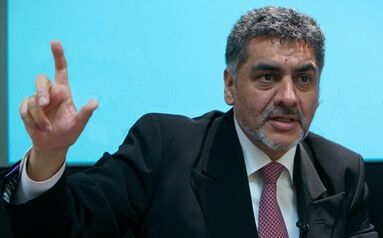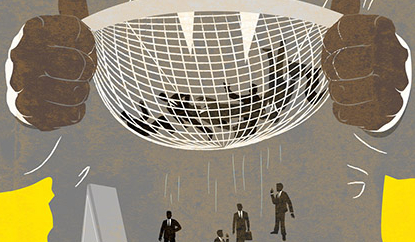中华人民共和国专利法(修正)(一)
|
中华人民共和国专利法(修正) (Adopted at the Fourth Meeting of the Standing Committee of the Sixth National People's Congress on March 12,1984 and amended in accordance with the Decision of the Standing Committee of the Seventh National People's Congress on Amending the Patent Law of the People's Republic of China adopted at its 27th Meeting on September 4,1992) Contents Chapter I General Provisions Chapter II Conditions for the Grant of Patent Rights Chapter III Application for Patents Chapter IV Examination and Approval of Patent Applications Chapter V Term, Termination and Invalidation of Patent Rights Chapter VI Compulsory License for Exploitation of a Patent Chapter VII Protection of Patent Rights Chapter VIII Supplementary Provisions Chapter I General Provisions Article 1 This Law is formulated in order to protect patent rights for invention-creations, encourage invention-creations and facilitate their popularization and application, promote the development of science and technology and meet the needs of the socialist modernization. Article 2 For the purpose of this Law, “invention-creation” means inventions, utility models and designs. Article 3 The Patent Office of the People's Republic of China shall accept and examine patent applications and grant patent rights for invention-creations that conform to the provisions of this Law. Article 4 If an invention creation for which a patent is applied involves national security or other vital interests of the State that require secrecy, the matter shall be treated in accordance with the relevant provisions of the State. Article 5 No patent right shall be granted for any invention-creation that violates the laws of the State, goes against social morals or is detrimental to the public interest. Article 6 For a job related invention-creation made by any person in execution of the tasks of the entity to which he belongs or by primarily using the material resources of the entity, the right to apply for a patent shall belong to the entity. For an invention-creation that is not job-related, the right to apply for a patent shall belong to the inventor or designer. After an application is approved, if it was filed by an entity owned by the whole people, the patent right shall be held by such entity; if it was filed by a collectively owned entity or an individual, the patent right shall be owned by such entity or individual. For a job-related invention-creation made by any staff member or worker of a foreign-owned enterprise or a Chinese-foreign equity joint venture within the territory of China, the right to apply for a patent shall belong to the enterprise or joint venture, For an invention-creation that is not job-related, the right to apply for a patent shall belong to the inventor or designer. After the application is approved, the patent right shall be owned by the enterprise, joint venture or individual that applied for it. The owners and holders of patent rights are uniformly referred to herein as “patentees.” Article 7 No entity or individual may suppress the application of an inventor or designer for a patent in respect of a invention-creation that is not job-related. Article 8 For an invention-creation made jointly by two or more entities, or made by an entity in execution of a commission for research or design given to it by another entity, the right to apply for a patent shall belong, unless otherwise agreed upon, to the entity which made or the entities which jointly made the invention creation. After the application is approved, the patent right shall be owned or held by the entity or entities that applied for it. Article 9 If two or more applicants apply separately for a patent on the same invention creation, the patent right shall be granted to the person who applied first. Article 10 The right of patent application and the patent right itself may be assigned. If an entity owned by the whole people wishes to assign a right of patent application or a patent right, it must obtain the approval of the competent authorities at the next higher level. If a Chinese entity or individual wishes to assign a right of patent application or a patent right to a foreigner, it or he must obtain the approval of the relevant competent department under the State Council. In cases where a right of patent application or a patent right is assigned, the parties must conclude a written contract, which shall come into force after it is registered with and publicly announced by the Patent Office. Article 11 After the grant of the patent right for an invention or a utility model, except as otherwise provided for in the law, no entity or individual may, without the authorization of the patentee, make, use or sell the patented product, or use the patented process and use or sell the product directly obtained by the patented process, for production or business purposes. After the grant of the patent right for a design, no entity or individual may, without the authorization of the patentee, make or sell the product incorporating its or his patented design, for production or business purposes. After the grant of the patent right, except as otherwise provided for in the law, the patentee shall have the right to prevent any other person from importing, without its or his authorization, the patented product, or the product directly obtained by its or his patented process, for the uses mentioned in the preceding two paragraphs. Article 12 Except as provided for in Article 14 of this Law, any entity or individual exploiting the patent of another must conclude a written licensing contract with the patentee and pay the patentee a fee for the exploitation of its or his patent. The licensee shall not have the right to authorize any entity or individual other than that referred to in the contract to exploit the patent. Article 13 After the application for an invention patent has been publicly announced, the applicant may require the entities or individuals exploiting the invention to pay an appropriate fee. Article 14 The relevant competent departments under the State Council and the people's governments of provinces, autonomous regions and municipalities directly under the Central Government shall, in accordance with the State plan, have the power to permit designated entities to exploit important invention creation patents held by entities owned by the whole people under the organizational system or jurisdiction of these departments and governments. The entities exploiting such patents shall, in accordance with State provisions, pay an exploitation fee to the entity holding the patent right. If patents held by Chinese individuals or collectively owned entities are of great significance to the interests of the State or the public and need to be applied on an extended scale, the matter shall be handled by the relevant competent department under the State Council according to the provisions of the preceding paragraph after reporting to the State Council and obtaining its approval. Article 15 The patentee shall have the right to affix a patent marking and indicate the patent number on the patented product or on the packaging of that product. Article 16 The entity owning or holding the patent right on a job-related invention-creation shall reward the inventor or designer and shall, upon exploitation of the patented invention creation, reward the inventor or designer in accordance with the scope of its application and the economic benefits derived from it. Article 17 An inventor or designer shall have the right to name himself as such in the patent document. Article 18 If a foreigner, foreign enterprise or other foreign organization having no regular residence or place of business in China files an application for a patent in China, the application shall be handled under this Law in accordance with any agreement concluded between the country to which the applicant belongs and China, or any international treaty to which both countries are party, or on the basis of the principle of reciprocity. Article 19 If a foreigner, foreign enterprise or other foreign organization having no regular residence or place of business in China applies for a patent or has other patent matters to attend to in China, he or it shall entrust a patent agency designated by the State Council of the People's Republic of China to act on his or its behalf. If any Chinese entity or individual applies for a patent or has other patent matters to attend to in the country, it or he may entrust a patent agency to act on its or his behalf. Article 20 If a Chinese entity or individual intends to file an application in a foreign country for a patent on an invention creation completed in China, it or he shall first file an application for patent with the Patent Office and shall, with the sanction of the relevant competent department under the State Council, entrust a patent agency designated by the State Council to act on its or his behalf. Article 21 Until the publication or public announcement of a patent application, staff members of the Patent Office and persons involved shall have the duty to keep the contents of the patent application confidential. Chapter II Conditions for the Grant of Patent Rights Article 22 Any invention or utility model for which a patent right may be granted must possess the characteristics of novelty, inventiveness and usefulness. “Novelty” means that, before the filing date of the application, no identical invention or utility model has been publicly disclosed in domestic or foreign publications or has been publicly used or made known to the public by any other means in the country, nor has any other person previously filed with the Patent Office an application describing an identical invention or utility model which was recorded in patent application documents published after the said date of filing. “Inventiveness” means that, compared with the technology existing before the filing date of the application, the invention has prominent and substantive distinguishing features and represents a marked improvement, or the utility model possesses substantive distinguishing features and represents an improvement. “Usefulness” means that the invention or utility model can be made or used and can produce positive results. Article 23 Any design for which a patent right may be granted must not be identical with or similar to any design which, before the filing date of the application, has been publicly disclosed in domestic or foreign publications or has been publicly used within the country. Article 24 Any invention-creation for which a patent is applied shall not lose its novelty if, within six months before the filing date of the application, one of the following events has occurred: (1) it was exhibited for the first time at an international exhibition sponsored or recognized by the Chinese Government; (2) it was made public for the first time at a prescribed academic or technical conference; or (3) it was disclosed by any person without the consent of the applicant. Article 25 For any of the following, no patent right shall be granted: (1) scientific discoveries; (2) rules and methods for mental activities; (3) methods for the diagnosis or for the treatment of diseases; (4) animal and plant varieties; (5) substances obtained by means of nuclear transformation. For processes used in producing products referred to in Item (4) of the preceding paragraph, patent right may be granted in accordance with the provisions of this Law. Chapter III Application for Patents Article 26 When a patent application is filed for an invention or a utility model, relevant documents shall be submitted, including a written request, a specification and an abstract thereof, and a patent claim. The written request shall state the title of the invention or utility model, the name of the inventor or designer, the name and address of the applicant and other related matters. The specification shall describe the invention or utility model in a manner sufficiently clear and complete so that a person skilled in the relevant field of technology can accurately produce it; where necessary, drawings shall be appended. The abstract shall describe briefly the technical essentials of the invention or utility model. The patent claim shall, on the basis of the specification, state the scope of the patent protection requested. Article 27 When a patent application is filed for a design, relevant documents shall be submitted, including a written request and drawings or photographs of the design; the product on which the design is to be used and the category of that product shall also be indicated. Article 28 The date on which the Patent Office receives the patent application documents shall be the filing date of the application. If the application documents are sent by mail, the postmark date shall be the filing date of the application. Article 29 Where, within twelve months from the date on which any applicant first filed in a foreign country an application for a patent for invention or utility model, or within six months from the date on which any applicant first filed in a foreign country an application for a patent for design, he or it files in China an application for a patent for the same subject matter, he or it may, in accordance with any agreement concluded between the said foreign country and China, or in accordance with any international treaty to which both countries are party, or on the basis of the principle of mutual recognition of the right of priority, enjoy a right of priority. Where, within twelve months from the date on which any applicant first filed in China an application for a patent for invention or utility model, he or it files with the Patent Office an application for a patent for the same subject matter, he or it may enjoy a right of priority. Article 30 Any applicant who claims the right of priority shall make a written declaration when the application is filed, and submit, within three months, a copy of the patent application documents that was first filed; if the applicant fails to make the written declaration or fails to submit a copy of the patent application documents within the time limit, the claim to the right of priority shall be deemed not to have been made. |








